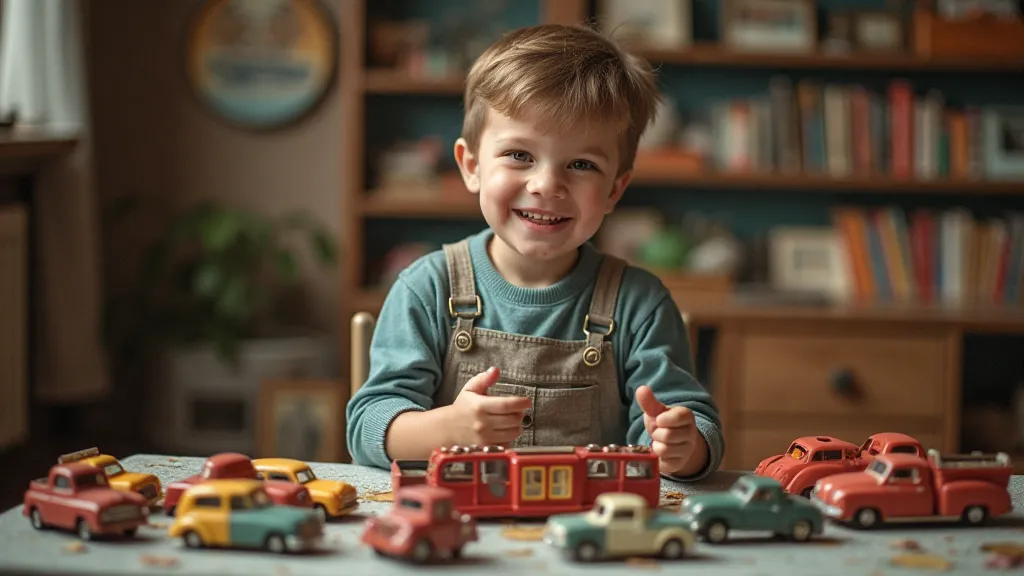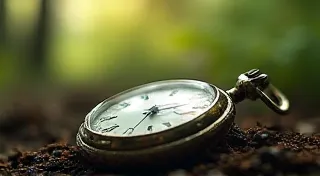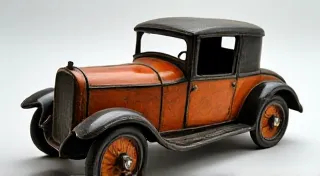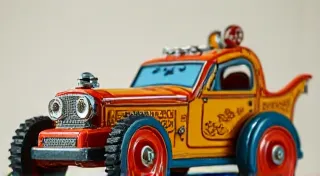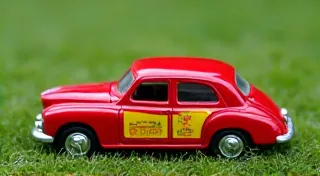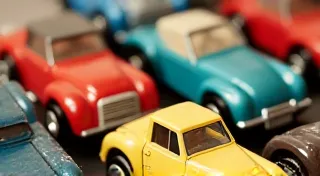Dinky Toys: A Collector's Dream
For generations, the allure of miniature metal vehicles has captivated young and old alike. Among these, Dinky Toys hold a particularly esteemed place in the world of collectible diecast models. Originally produced by Meccano, a British company famous for its construction sets, Dinky Toys represent a fascinating chapter in toy history and continue to be highly sought after by collectors worldwide. This article delves into the world of Dinky Toys, exploring their history, key models, popular lines, and the factors that contribute to their enduring appeal.
A Brief History: From Meccano to Dinky Toys
The story of Dinky Toys begins in 1933. Meccano, looking for a way to expand its product line beyond construction sets, decided to produce miniature versions of popular automobiles and commercial vehicles. These early models, initially called "Miniatures," were hand-painted and cast in fatter, less detailed forms. The name "Dinky" emerged from a nickname given to these small models by the factory workers, and it quickly stuck. Production expanded rapidly throughout the 1930s and 40s, reflecting the changing automotive landscape. The design and manufacturing techniques involved reflect the broader trends in toy car design, a subject explored in more detail in The Cartographer's Dream: Mapping the Evolution of Toy Car Design.
World War II significantly impacted Dinky Toys production. While metal was diverted to the war effort, limited production continued, focusing on military vehicles like tanks, trucks, and ambulances, often in subdued colors. Post-war, the company resumed producing commercial vehicles and cars, refining the models and introducing more detail. In 1964, the company transitioned to Supertoys, offering larger, more detailed models. Production continued until 1979 when the company was liquidated.
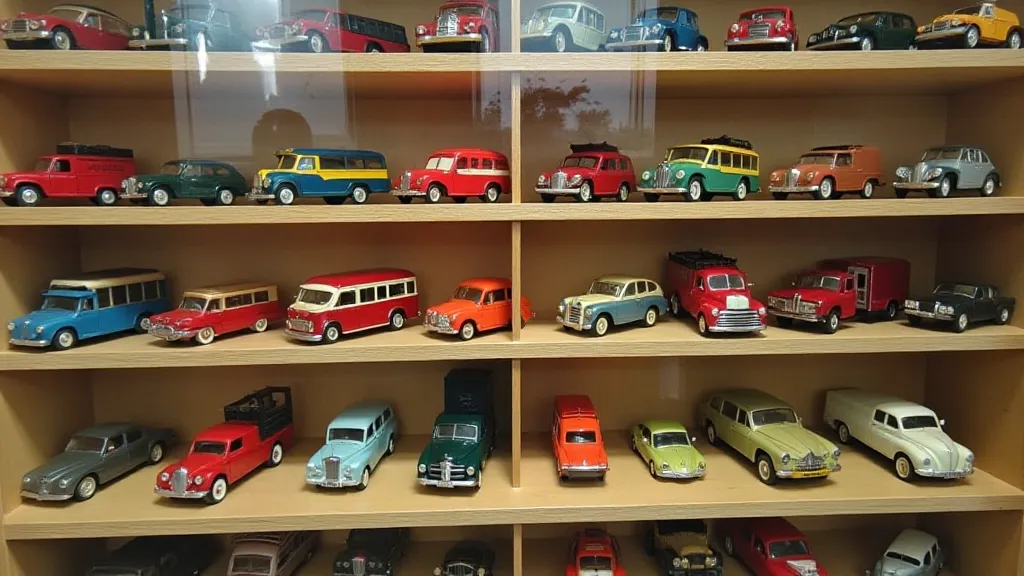
Popular Lines and Key Models
Dinky Toys produced a vast array of models across numerous lines, catering to various tastes and budgets. Here’s a look at some of the most sought-after:
- Commercial Vehicles: These remain incredibly popular. Models of delivery vans, buses, and trucks from various manufacturers like Bedford, Commer, and Atkinson are highly valued. The rarity of certain liveries (paint schemes) significantly impacts their value. Many of these models share manufacturing heritage with other iconic toy car brands, as outlined in Famous Manufacturers of Vintage Toy Cars: A Comprehensive List.
- Racing Cars: The golden age of motorsport inspired a line of Dinky Racing Cars, featuring miniature versions of iconic Formula 1 cars and sports racers from the 1950s and 1960s. Models of Ferrari, Maserati, and Aston Martin are particularly prized.
- Military Vehicles: As mentioned earlier, the war years led to a dedicated line of military vehicles. These, often in weathered olive drab paint, are popular amongst military vehicle enthusiasts.
- Utility Vehicles: Jeeps, Land Rovers, and other utility vehicles found their way into the Dinky Toys catalogue. These models reflect the post-war boom in outdoor recreation and vehicle versatility.
- Aircraft: Though not as common as their automotive offerings, Dinky Toys also produced miniature airplanes, including British Airways speed birds.
Notable Models:
Several individual models stand out as particularly desirable amongst collectors:
- Dinky 230 Morris Minor: This early model is representative of the classic Dinky aesthetic and is still reasonably accessible to entry-level collectors.
- Dinky 229 Austin Cambridge: Similar to the Morris Minor, the Austin Cambridge offers a charming look at mid-century automotive design.
- Dinky 22B AEC Mercury Tanker: This model, often found with faded paint due to the nature of the plastic tank, is coveted for its rarity.
- Dinky 190 Alfa Romeo 158: Considered one of the most beautiful and desirable Dinky Toys ever produced, this replica of the legendary Grand Prix car commands a high price.
- Dinky 240 Volvo P1800: A stylish and iconic sports car, the Dinky version reflects the design flair of the 1960s.
Understanding Value and Condition
The value of a Dinky Toy is determined by several factors:
- Rarity: Limited production runs or models with unusual features naturally command higher prices. The scarcity of certain models often stems from short production runs or unique variations introduced during the manufacturing process.
- Condition: "Mint in Box" (MIB) models, still in their original packaging, are the most valuable. However, even models without boxes can be valuable if they are in excellent condition. The condition is paramount; any signs of wear and tear dramatically impact value.
- Paint Quality: Original paint quality is important. Fading, chipping, or poor application can detract from a model's value. Original paint is highly sought after, and reproductions often diminish a model’s appeal.
- Box Condition: If a model has its original box, the condition of the box is also crucial. Damage, fading, or missing flaps all impact value. A pristine box significantly enhances the overall value of the model.
- Variations: Subtle differences in paint color, base markings, or wheels (known as "variations") can significantly increase the price of a Dinky Toy. These variations are often a product of changes in manufacturing processes or supplier differences.
- Authenticity: With the rising popularity of collecting, the risk of reproduction and counterfeit models has increased. Experts often examine subtle details to verify authenticity.
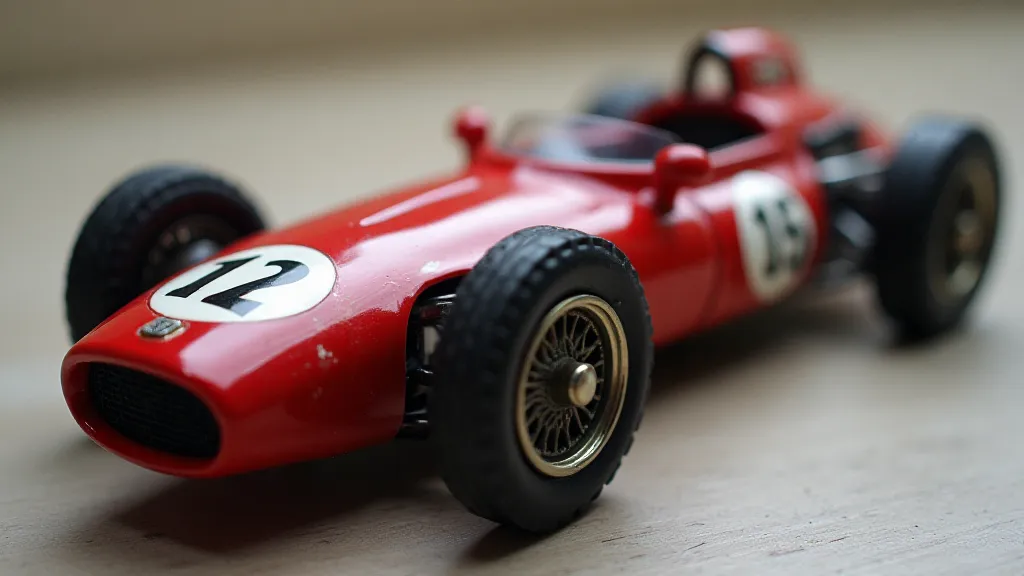
Collecting Tips and Resources
For those embarking on a Dinky Toys collecting journey, here are a few tips:
- Specialize: The range of Dinky Toys is vast. Consider focusing on a specific line, manufacturer, or period. This approach allows for a more focused understanding of the market.
- Research: Thorough research is essential. Learn to identify variations and understand pricing trends. Resources like collector’s clubs and online forums can be invaluable.
- Join Clubs and Forums: Connect with other collectors to share knowledge and buy/sell models. The camaraderie and shared expertise can accelerate your learning.
- Attend Toy Fairs: Toy fairs offer a wide selection of Dinky Toys and the opportunity to meet fellow enthusiasts. These events provide a chance to examine models firsthand and potentially find rare items.
- Be Patient: Building a quality Dinky Toys collection takes time and effort. Finding the right models at the right prices often requires patience and persistence.
- Understand Japanese Influence: While Dinky Toys are British, the manufacturing processes and aesthetics were often influenced by Japanese tinplate toy production. Exploring Japanese Tinplate Toys: A World of Charm can provide context for some design choices and techniques.
The Enduring Appeal
Dinky Toys represent more than just miniature metal vehicles; they are tangible links to a bygone era of automotive design and British manufacturing. The combination of nostalgia, craftsmanship, and historical significance makes them a captivating and rewarding collectible. Whether you are a seasoned collector or a curious newcomer, the world of Dinky Toys offers a fascinating journey through toy history. The popularity of these toys reflects a broader appreciation for vintage playthings and a desire to connect with the past.
